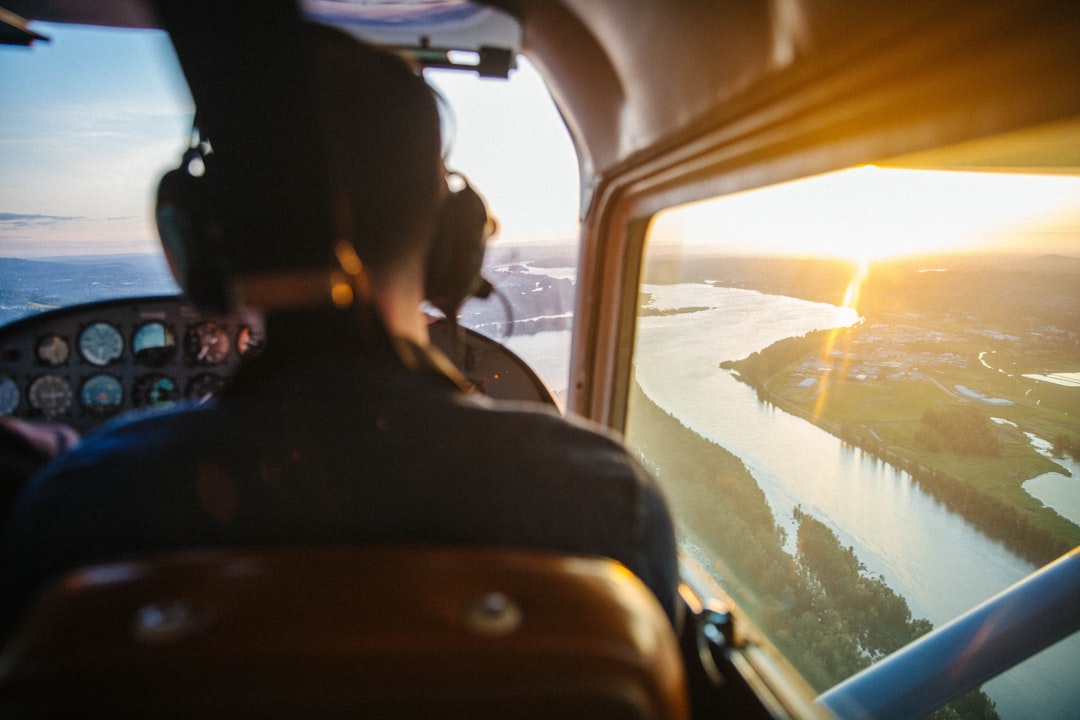
The career of an airline pilot is often romanticized in popular culture, depicted as a life of adventure, freedom, and the thrill of flying high above the clouds. However, the reality of being an airline pilot is a complex blend of rigorous training, strict regulations, and a commitment to safety. Airline pilots are responsible for navigating commercial aircraft, ensuring the safety of passengers and crew, and adhering to a myriad of regulations set forth by aviation authorities.
The profession requires not only technical skills but also strong leadership qualities and the ability to make quick decisions under pressure. The allure of piloting an aircraft is undeniable. The view from the cockpit, the thrill of takeoff, and the satisfaction of landing safely after a long journey are experiences that few other professions can offer.
However, this career path is not for everyone. It demands a high level of dedication, discipline, and a willingness to adapt to an ever-changing environment. As air travel continues to evolve with advancements in technology and shifts in global demand, the role of airline pilots remains crucial in maintaining the safety and efficiency of air transportation.
Key Takeaways
- Airline pilots are responsible for safely operating aircraft and ensuring the comfort and safety of passengers.
- To become an airline pilot, one must obtain a commercial pilot’s license and complete extensive training and flight hours.
- The job duties of airline pilots include conducting pre-flight checks, communicating with air traffic control, and navigating the aircraft.
- Airline pilots in the USA can earn a competitive salary and benefits, including health insurance and retirement plans.
- The job outlook for airline pilots is favorable, with opportunities for advancement and career growth in the aviation industry.
Education and Training Requirements for Becoming an Airline Pilot
To embark on a career as an airline pilot, individuals must first meet specific educational and training requirements. The journey typically begins with obtaining a private pilot’s license (PPL), which requires a minimum of 40 flight hours, including both solo and dual instruction. This foundational step introduces aspiring pilots to the basics of flying, navigation, and aircraft operations.
Following the PPL, many pilots pursue an instrument rating, which allows them to fly under instrument flight rules (IFR), enhancing their skills in navigating through various weather conditions. After acquiring the necessary licenses, aspiring airline pilots often pursue a bachelor’s degree in aviation or a related field. While not always mandatory, a degree can significantly enhance job prospects and provide a deeper understanding of aviation principles.
Additionally, many airlines prefer candidates with a four-year degree. Following this educational phase, candidates must accumulate flight hours to qualify for an Airline Transport Pilot (ATP) license, which is required to act as a captain on commercial flights. This typically involves logging at least 1,500 flight hours, which can be achieved through various means such as flight instructing or working as a commercial pilot for smaller operations.
Job Duties and Responsibilities of Airline Pilots

The primary responsibility of an airline pilot is to operate aircraft safely and efficiently while ensuring the well-being of passengers and crew. This involves conducting pre-flight inspections to verify that the aircraft is in optimal condition before takeoff. Pilots must review flight plans, weather conditions, and air traffic control instructions to ensure a smooth journey.
During flights, they are responsible for monitoring instruments, communicating with air traffic control, and making real-time decisions based on changing conditions. In addition to flying the aircraft, pilots also play a crucial role in managing their crew and maintaining communication with cabin staff. They must be prepared to handle emergencies, whether they involve technical malfunctions or medical issues among passengers.
Effective communication skills are essential for coordinating with co-pilots and cabin crew to ensure that all safety protocols are followed. Furthermore, pilots must keep detailed logs of their flights, including any incidents or irregularities that occur during their journeys.
Salary and Benefits of Airline Pilots in the USA
| Experience Level | Annual Salary Range | Additional Benefits |
|---|---|---|
| Entry Level | 50,000 – 80,000 | Health insurance, retirement plans |
| Mid-Level | 80,000 – 150,000 | Flight benefits, paid time off |
| Experienced | 150,000 – 300,000 | Performance bonuses, stock options |
The financial compensation for airline pilots can vary significantly based on factors such as experience, type of aircraft flown, and the airline’s size. According to the Bureau of Labor Statistics (BLS), as of May 2022, the median annual wage for airline pilots in the United States was approximately $202,180. Entry-level pilots may start with salaries around $50,000 to $70,000 per year, while experienced captains at major airlines can earn well over $300,000 annually.
In addition to competitive salaries, airline pilots often enjoy a range of benefits that enhance their overall compensation package. These benefits typically include health insurance, retirement plans, and travel perks that allow pilots and their families to fly at reduced rates or even for free on certain airlines. The nature of their work also provides opportunities for travel to various destinations around the world, which can be an attractive aspect of the profession for many individuals.
Job Outlook and Opportunities for Airline Pilots
The job outlook for airline pilots appears promising as air travel continues to rebound following disruptions caused by global events such as the COVID-19 pandemic. According to the BLS, employment for airline pilots is projected to grow by 6% from 2021 to 2031, which is about as fast as the average for all occupations. This growth is driven by an increase in air travel demand as economies recover and more people return to flying for both business and leisure purposes.
Moreover, many experienced pilots are reaching retirement age, creating additional opportunities for new entrants into the field. Airlines are actively seeking qualified candidates to fill these positions, leading to a competitive job market that favors those who have completed their training and accumulated sufficient flight hours. Additionally, advancements in technology may lead to new roles within the aviation industry that require specialized skills in areas such as unmanned aerial vehicles (UAVs) or advanced flight systems.
Challenges and Risks of Being an Airline Pilot

While the career of an airline pilot can be rewarding, it is not without its challenges and risks. One significant challenge is the demanding schedule that often includes irregular hours, long flights, and time away from home. Pilots may find themselves working nights, weekends, and holidays, which can take a toll on personal relationships and family life.
The need for adaptability is crucial as flight schedules can change at a moment’s notice due to weather conditions or operational requirements. Additionally, airline pilots face inherent risks associated with flying itself. Although commercial aviation is one of the safest modes of transportation, pilots must remain vigilant and prepared for emergencies such as mechanical failures or adverse weather conditions.
The psychological demands of the job can also be significant; pilots must maintain focus and composure during high-pressure situations while managing fatigue from long hours in the cockpit.
Advancement and Career Growth for Airline Pilots
Career advancement opportunities for airline pilots are abundant for those who demonstrate skill and dedication. Many pilots begin their careers as first officers or co-pilots before progressing to captain positions within their respective airlines. This advancement typically requires accumulating flight hours and experience operating specific aircraft types.
Captains hold greater responsibility for flight operations and crew management, making this position highly sought after among aspiring pilots. Beyond traditional advancement within airlines, experienced pilots may also explore opportunities in other sectors of aviation.
Others may find positions in aviation management or safety oversight roles within regulatory agencies or private companies. The diverse skill set developed throughout a pilot’s career allows for flexibility in pursuing various paths within the aviation industry.
Conclusion and Final Thoughts on Pursuing a Career as an Airline Pilot
Pursuing a career as an airline pilot is a journey filled with challenges but also rich with rewards.
For those who are passionate about aviation and willing to invest time in education and training, becoming an airline pilot can lead to a fulfilling career that offers both adventure and stability.
As air travel continues to evolve with technological advancements and changing consumer demands, the role of airline pilots will remain vital in ensuring safe and efficient operations within the industry. For aspiring pilots considering this path, understanding the commitment required—both in terms of education and lifestyle—is essential for success in this dynamic field.
If you are interested in learning more about careers in the USA as an Airline Pilot, Copilot, or Flight Engineer, you may also want to check out this article on careersintheusa.com. This website offers a wealth of information on various career paths in the United States, including job outlook, salary information, and educational requirements. It is a valuable resource for anyone looking to explore different career options and make informed decisions about their future.
FAQs
What are the requirements to become an airline pilot in the USA?
To become an airline pilot in the USA, individuals must have a bachelor’s degree, complete flight training, and obtain a commercial pilot’s license. They must also have a certain number of flight hours and pass the Federal Aviation Administration (FAA) exams.
What are the responsibilities of airline pilots, copilots, and flight engineers?
Airline pilots, copilots, and flight engineers are responsible for operating and navigating aircraft, ensuring the safety of passengers and crew, communicating with air traffic control, and monitoring the aircraft’s systems during flight.
What is the job outlook for airline pilots in the USA?
According to the Bureau of Labor Statistics, the job outlook for airline pilots, copilots, and flight engineers in the USA is projected to grow 5% from 2019 to 2029, which is about as fast as the average for all occupations.
What is the average salary for airline pilots in the USA?
The median annual wage for airline pilots, copilots, and flight engineers in the USA was $147,220 in May 2020, according to the Bureau of Labor Statistics.
What are the working conditions like for airline pilots in the USA?
Airline pilots in the USA often work irregular hours, including nights, weekends, and holidays. They may also experience long periods of time away from home, as well as varying weather conditions and time zone changes.



